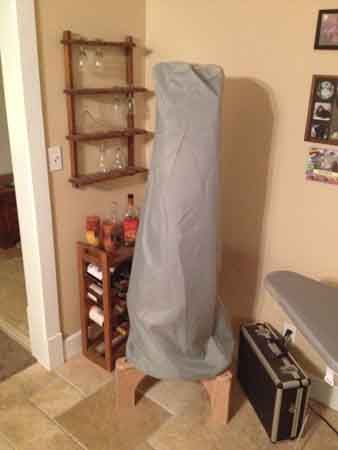Hillbilly Heaven
Explorer
Nice concealed armor idea. These days you almost need hard armor.
Nice concealed armor idea. These days you almost need hard armor.

 www.expeditionportal.com
www.expeditionportal.com

Looks good from my house!Looks like you cat cut the ridge? I like it. I made a Sil-nylon tarp once and only once. I saved maybe thirty dollars when it was all said and done. Not worth the struggle of learning how to deal with the super slippery xtra thin material to me. Mine is 12'x 12' with closed ends for winter hammock camping.I do bags and smaller stuff all day but the long hems and seams of that tarp left me stumbling around in circles talking to my self. If you ever get the itch again and you probably know this but the DIY community over on the Hammock forum are the best.A couple of years ago I tried my hand at sewing a bike packing tarp. I'm not the world's greatest sartor but I get along and inheriting a Pfaff from my family makes normal stuff almost look passable.
However I found working with Ultrasil exceptionally difficult. Are there any tricks to working with such light and mainly slick fabric? I just had trouble even pining the heck out of seams, particularly long ones, keeping things straight and square.
Happy I did it and would again, but wish it ended up looking a little less DIY-esque.
View attachment 508486
Has anyone sown a winch cover?






 P
PAs long as the fabric / pawl feed correctly. I was pre-ironing creases to help and discovered I needed to pin as much to keep the panels matched in length as in left-right alignment. First very long seam I tried to do with the lightweight ripstop wound up with the bottom layer scrunched up a bit and the top layer wound up 6-7" longer. Had to pull that stitch and try again.
Exactly! Pulling stitches and poking needle holes into your waterproof tarp is counter-intuitive, to say the least. I ended up with a combination of painters tape and my wife's two hands to get the seams of the tarp to agree at the end. The hems I did by my self.I have wondered if starting on both ends and meeting in the middle would be better.LOL.As long as the fabric / pawl feed correctly. I was pre-ironing creases to help and discovered I needed to pin as much to keep the panels matched in length as in left-right alignment. First very long seam I tried to do with the lightweight ripstop wound up with the bottom layer scrunched up a bit and the top layer wound up 6-7" longer. Had to pull that stitch and try again.
We have a Sailrite LZ1 that we bought years ago to do canvas work on the sailboat. Just finished a replacement dodger for the cockpit. Not anywhere near perfect but was way cheaper than having one made. One nice thing about Sailrite are all the videos they have for free about various sewing projects (if you are new to sewing you should check them out, mainly revolves around sailing but a lot of the techniques are the same). They also have some nice attachments for the machine that help make things a bit easier for the novice. When we get to the point of interior cushions for the RV we are building I am planning on giving those a try. Also will make a motorcycle cover for the Kawasaki Sherpa that will live outside on the rear rack.